VOLUME 1: THE FIRST OF TEN THOUSAND STEPS (Part 1)
COVER MONSTER: BLUE-EYES WHITE DRAGON (not in Core Booster)
Volume 1, or Vol.1, was the first ever CORE BOOSTER in the history of Konami's Yu-Gi-Oh! CCG. As the beginning point, you would be surprised to learn that the OCG's beginnings aren't that different from the TCG's in the sense of how limited things were. In fact, the OCG's start was even more limited than what the TCG had. At least the TCG had its rules immediately; Vol.1 only had the cards and little else if Japanese sources are to be believed.
Regardless, this Core Booster played an important role in preparing the foundations of the first Yu-Gi-Oh! Standard Deck and hinted towards how the first OCG format would play.
(There will be a tl;dr for this below.)
Above is the card types in Vol.1. A running theme of Series 1 cards is that the vast majority of monsters in each Core Booster are Normal Monsters. In the early OCG, there are no such thing as Effect Monsters. This means that all monsters are the same vanillas whose strength is based on power instead of utility.
Vol.1 began with a good deal of Magic Cards that had strong utility. For example, the EQUIP MAGIC CARDS and NORMAL MAGIC CARDS were both released for the first time in Vol.1. It's because they aren't labeled on the cards themselves that I didn't label them here. For better understanding, the labeling is done below:
EQUIP: 5
NORMAL: 4
As for the 1 Trap Card, that deserves its own section.
Rarities in Core Boosters are based on value and thus aren't easy to find. How cards are split within Boosters and the rarities still aren't fully understood, but I'll do my best to give it a go. Based on common knowledge, Core Boosters are split into 5 cards per pack. Of those cards, based on Japanese sources, those 5 in the beginning were split between "No Rares," "1 Rare," "1 Super Rare," and "1 Ultra Rare." The first few packs followed this encapsulation process.
TIER 1
By far the best monsters in the pack. With their elite Attack/Defense Power, nothing comes close to destroying these monsters by battle but each other. Summoning these monsters without being able to respond gives you an absolute advantage unless they can counter with their own. While Dark Magician will defeat Gaia on almost all occasions, there are a couple of scenarios where Gaia can triumph
TIER 2
If the Tier 1 monsters are
boss cards, the Tier 2 creatures are their key foot soldiers. The only
monsters between 1000-2000 ATK, they're able to dominate everything that
isn't Tier 1. Any Deck worth their salt must have them at 3. If not
possible, then Silver Fang is the most necessary addition to the
Standard Deck.
TIER 3
This tier holds the rest of the viable monsters. Most tend to have 800 ATK like Kagemusha of the Blue Flame or Nemuriko. Petit Angel, while being weak offensively, has the DEF to repel Dark Gray and Kurama have the bonus of being sufficiently tough on DEF to repel these monsters' attacks while being well-rounded.
MINUTE DETAILS
In this set, there are monsters that are higher or lower in power while having the same Level, Tribe and/or Attribute.
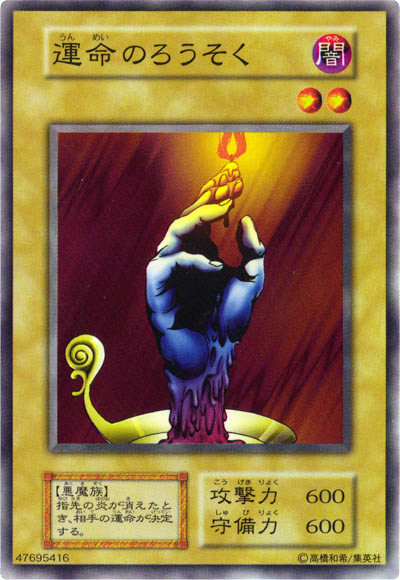
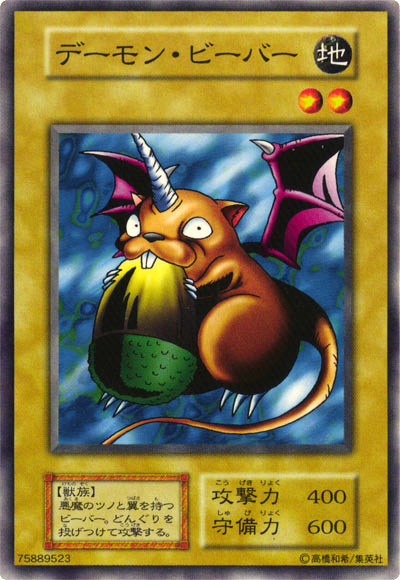
Vol.1 also has monsters that have never been reprinted in Japanese:
("Archfiend Mirror", "Candle of Fate", "Curtain of the Dark Ones", "Eyearmor", "Fiend's Hand", "Fire Reaper", "Haniwa", "Hitodenchak", "LaLa Li-oon", "Meotoko", "Sectarian of Secrets", "Tomozaurus", "The Drdek", "Thunder Kid", "Winged Cleaver").
8 cards have never been printed in the TCG. These are:
("Archfiend Mirror", "Candle of Fate", "Eyearmor", "Fiend's Hand", "Hitodenchak", "Hourglass of Life", "LaLa Li-oon", "The Drdek")
MAGIC
While the monsters were the backbone of the Deck, a full 40 monster Deck would be too unbalanced. It could potentially overwhelm opponents through attrition. But its loss could be near guaranteed against a more balanced Deck that used its Magic Cards to its fullest. It's these cards that support the monsters on the path to victory.
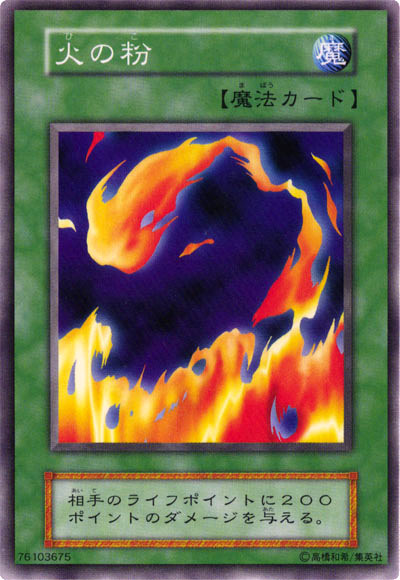
Red Medicine and Sparks are the worst cards in Vol.1 The only reason to use them would be for Deck space/mandatory Side Deck filling. However, the historical value of these are in their introduction of Life Points and Effect Damage (
EQUIPS
We reach the first serious Magics that had an impact on the game. In a world where monster exist to attack and defend, cards that boost those stats are valuable in putting more pressure upon your opponent. These Equips boosted the ATK/DEF of the equipped monster of a certain Tribe. For example:
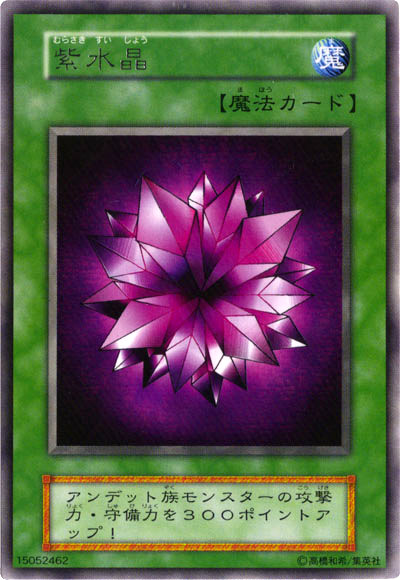
Fire Reaper (ファイヤー・デビル Faiyā Debiru "Fire Devil") and its slightly more defensive counterpart Fiend's Hand (
Power of Kaishin (ポセイドンの
As you can see, Spellcasters, Beasts and Warriors hold a strong plurality of monsters available from Vol.1. This, along with the power of certain members of these Tribes, are what make these Equips the quality option.
These three cards are invaluable in the Starter Box format due to both the strength and numbers of these Tribes.
BOOK OF SECRET ARTS (秘 術 の書 Hijutsu no Sho)
Book of Secret Arts gives the 300 ATK/DEF bonus towards the Spellcasters. One of those Spellcasters is Dark Magician. With 2500 ATK/2100 DEF, Dark Magician is the strongest monster of Vol.1 and of the game pre-Starter Box. Nemuriko is also available in Vol.1 as a valid Secret Arts target.
LEGENDARY SWORD (伝 説 の剣 Densetsu no Ken)
Like Book of Secret Arts, Legendary Sword can be equipped to the other 2000+ Attacker of the format in Gaia the Fierce Knight. When boosted by Legendary Sword, Gaia's 2600 ATK is enough to directly overcome Dark Magician by battle. In the Official Rules Yu-Gi-Oh!, this kind of statistic is Meta-defining. Kagemusha of the Blue Flame (
BEAST FANGS (猛 獣 の歯 Mōjū no Ha)
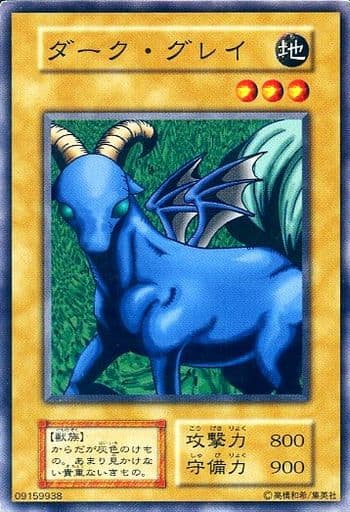
Beast Fangs is perhaps the most impactful of the Equips introduced in Vol.1. While Book of Secret Arts/Legendary Sword could potentially have higher impact, both Dark Magician/Gaia the Fierce Knight were Ultra Rares. Thus pulling them wouldn't be an easy task. However, all 4 Beasts in Vol.1 are Commons. They're much more likely to appear than the Tier 1 Bosses in a Deck.
Most notable is Silver Fang (シルバー・フォング Shirubā Fongu). With its 1200 ATK, it's tied with both Hitotsu-Me Giant and Mammoth Graveyard. That tie meant that under normal circumstances, they would destroy each other. However, Beast Fangs gives Silver Fang a stat line of 1500/1100. That 1500 ATK can beat over its Tier 2 brethren and every other monster not named Dark Magician/Gaia the Fierce Knight. Dark Gray (ダーク・グレイDāku Gurei) can also take advantage of the stat boost, becoming 1100/1200 and thus able to hold back the Tier 2 monsters.
If that were all the impact that Magic Cards had, this game wouldn't be that much different from the Bandai version. So there is one more kind of Magic Card that added another dimension to play.
MONSTER REMOVAL (もんすたー除去 Monsutā jokyo)
THE most important aspect to come out of Vol.1 was the introduction of the monster removal cards. These cards, when conditions are fulfilled, can simply destroy a monster on the field. Three cards were introduced with this kind of effect in mind.
Fissure (
This alone doesn't impact the battle-oriented Meta that Vol.1 seemed to be developing. However, the next card would:
Dark Hole (ブラック・ホール Burakku Hōru "Black Hole") is the most important card to come out of this Volume for the competitive scene. The first mass removal card in Yu-Gi-Oh!'s history, Dark Hole destroys all of the monsters on either side of the field. While you may be thinking this is extremely costly, Dark Hole doesn't require you to control monsters for cost. So if someone had fallen behind on field advantage, Dark Hole can flip a Duel on its head by mostly resetting the board.
There's one more card left to discuss before we can declare this post complete.
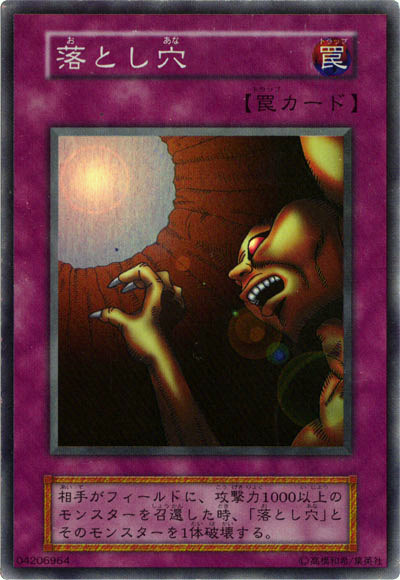 It might be surprising to hear that Trap Hole (
It might be surprising to hear that Trap Hole (Because of this, simply bluffing Trap Hole by Setting a Magic Card was enough to give an opponent pause. Remember that there's no S/T removal at this time, so Trap Hole was something you could only trigger. You could either Summon a monster that fulfilled Trap Hole's conditions and risk the activation or just Set it and hope your opponent just attacks into your monster so you can safely get it onto the field. Ironically, this is the advantage the Tier 3 monsters have over their higher brethren: they don't trigger Trap Hole.
Trap Hole's existence without the offsetting cards that bring balance creates the condition where Setting your cards is more valuable than outright Summoning. Even if it is a bluff, you can't risk losing your Dark Magician or your Silver Fang if you have them. It's impossible to recover monsters in this format, so it's be best to be wise on how a Duelist plays them.
CONCLUSION
The first Volume of the OCG set the stage for how the game's first format developed. One where monster advantage is everything, Decks with monster removal could impact the direction of a Duel in their favor. This would be a running theme for the majority of Series 1 until a new Deck completely upended the order of things.
TL;DR
- Oh boy that's a lot of monsters.
- The best monsters are those with high ATK/DEF.
- There are 3 tiers of viable Meta monsters to build a Deck around.
- Those monsters could be equipped with Equip Spells based on their Tribes
- The most numerous Tribes are Spellcaster, Beast, and Warrior.
- They incidentally have monsters in all 3 tiers like Dark Magician, Gaia the Fierce Knight/Silver Fang
- The most impactful cards are those that remove monsters from the field.
- While Fissure was effective at spot removal, Dark Hole/Trap Hole heavily impacted the Meta.
- Dark Hole was the first mass monster removal card; Trap Hole was the first Stun card
- Setting was monumental to play as you could bluff Trap Hole and potentially dictate their moves.
- Setting could also be used to safely get a Tier 1/2 monster onto the field.
- Tier 3 monsters were capable of not triggering Trap Hole on Summon.
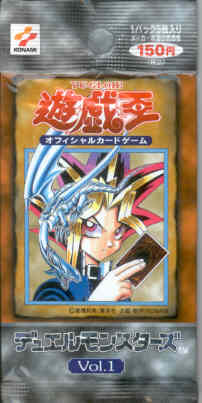







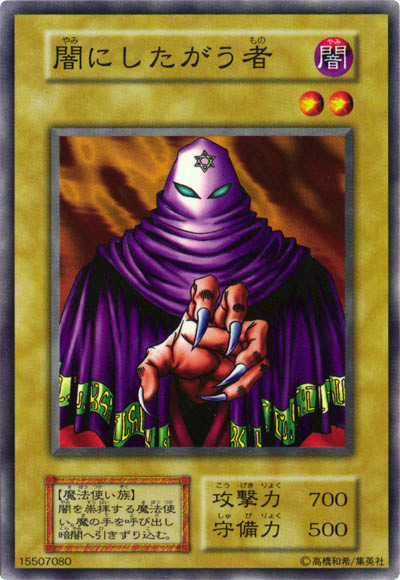
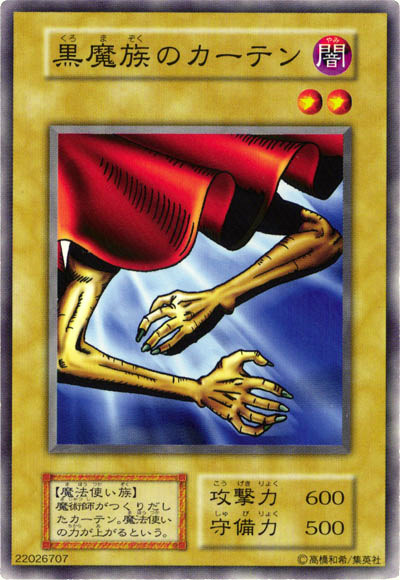
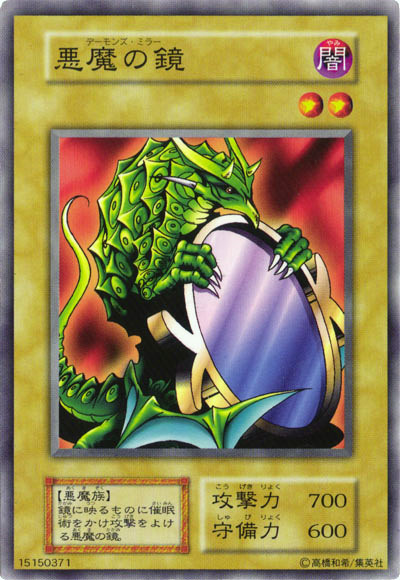
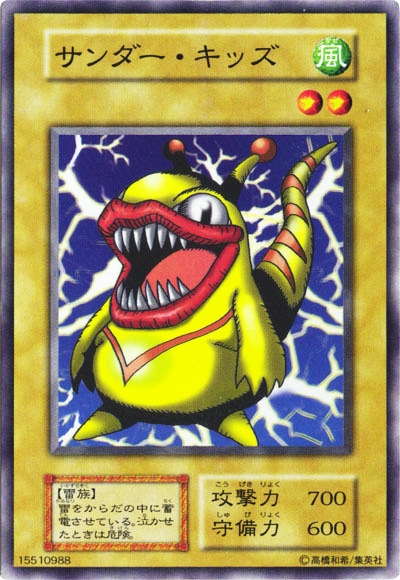
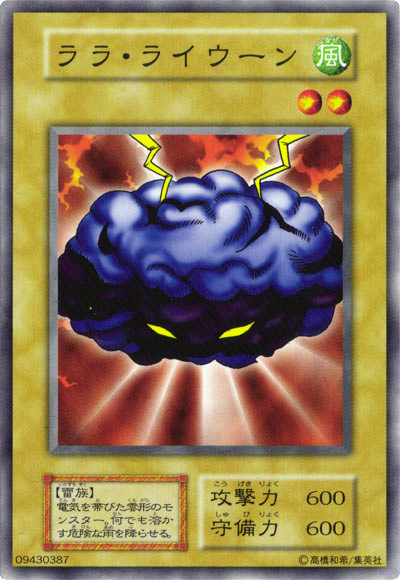
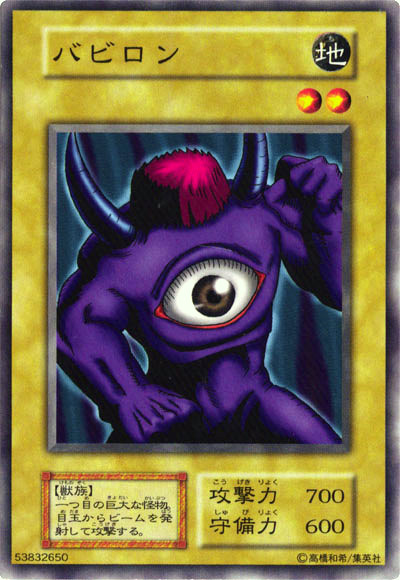
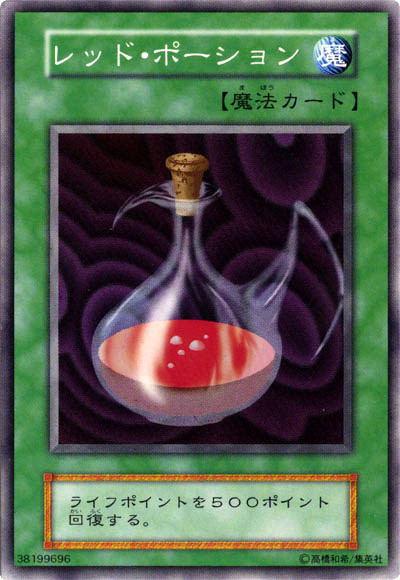
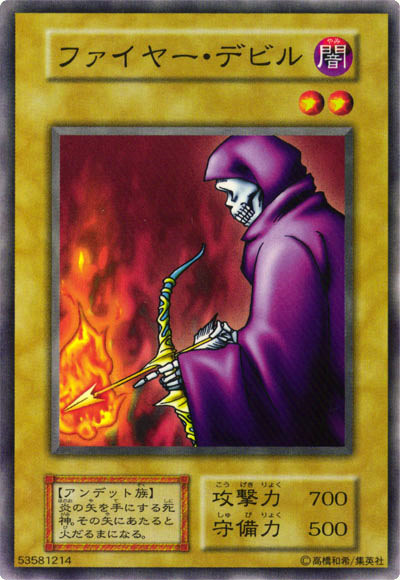
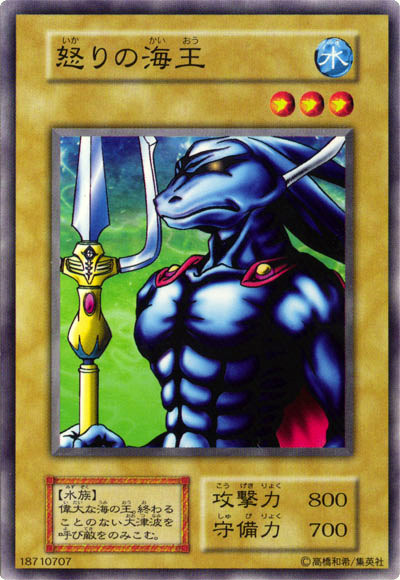


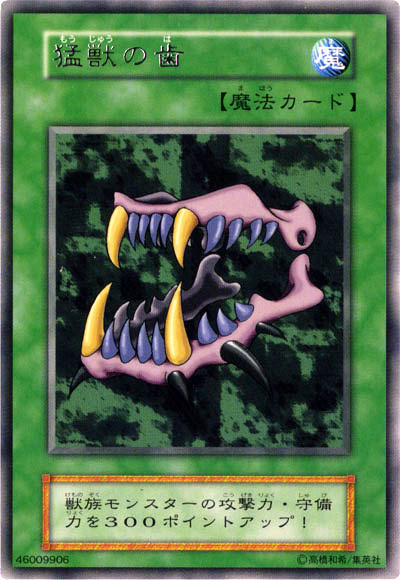
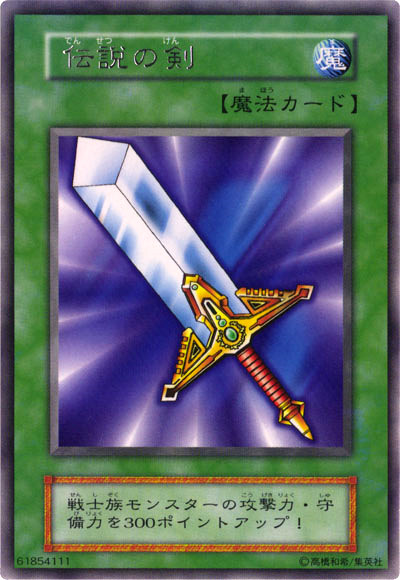
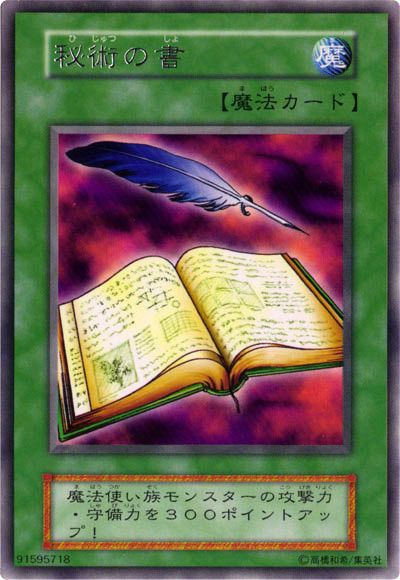

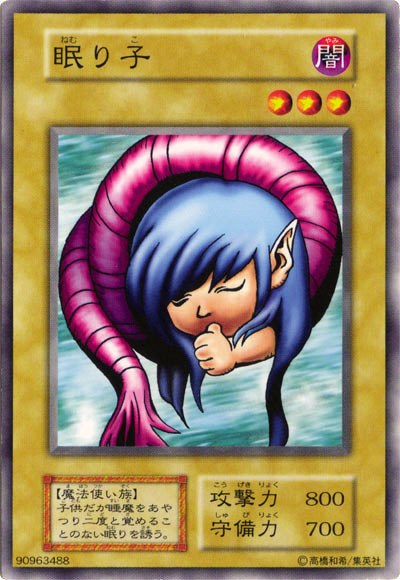
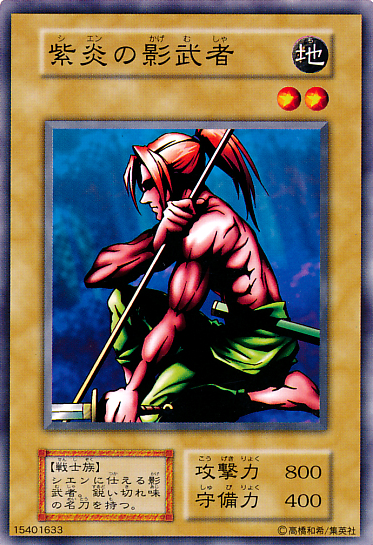



Comments
Post a Comment